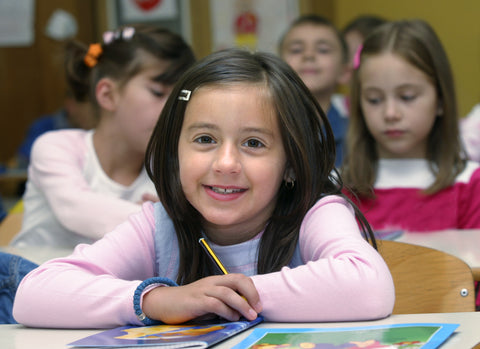Managing Anger for Positive Outcomes
Blog · Dec 13, 2019

We often view anger as a negative emotion, but anger is a healthy emotion that works to alert us to something we don’t like and prompt us to make a change or to find a solution to the problem. Anger can vary in intensity, ranging from minor annoyance to rage and is not always expressed outwardly. Some people have quick tempers, while others almost never seem to lose their cool. Independent of how it is expressed, unmanaged anger can escalate to aggression. Throwing things, slamming doors, or destroying property create problems for the classroom as a whole and disrupt the learning process. For children, frustration can lead to acting out, withdrawal, and other negative behaviors. When children understand that being mad sometimes is normal and can be healthy when managed and expressed constructively, they are better able to find solutions to address what bothers them.
Recognizing Physical Signs
Recognizing the physical signs of angry feelings as they begin to build is the first indicator in identifying a building emotion and beginning the work to manage it. Teaching children the skills to recognize the physical signs of emotions prepares them to recognize anger starting to build. Children who can recognize how their body feels when they are angry, like a rapid heartbeat, clenched fists, or rapid breathing, are better able to manage their angry feelings and channel them into a productive and prosocial response. Talk to your students about what their body tells them when they get mad about something.
Stop to Think
Offering children strategies to manage and diffuse their anger in a healthy way before their anger is released through aggressive behavior will help them work through their feelings and resist letting their anger escalate. With that, children can then manage difficult situations without disrupting their peers or interfering with their progress on reaching their goals. There are numerous anger management strategies that children can easily adopt to help them respond peaceably to their angry feelings. For instance, drawing may help young children cope with frustration or disappointment, while writing in a journal can be a constructive way for teens to process what is bothering them and find healthy solutions to address their frustration. Encourage your students to find activities to help them calm themselves down like going for a walk or taking a few deep breaths so they can manage what angers them.
Promoting Self-Awareness
A long-term strategy for preparing children and adolescents to successfully managing their emotions is promoting the development of their capacity for self-awareness. Together with the other strategies of recognizing the physical signals of a building emotion, being mindful of how we feel helps us begin to calm down and keep the emotion from escalating. We can take account of the entire situation from our perspective and that of the other people or events involved. It is with this self-awareness that we can see past our frustration or anger and find a way to calm down and then find a positive solution to resolve the problem or exit the situation before it escalates. This gives us time to think through the decisions we are about to make and consider the consequences of those decisions before we act and avoid doing something we would regret later. Developing our self-awareness takes time and practice and a commitment to resisting the impulse to meet anger with aggression. Encourage your students to give themselves a time-out when they are feeling angry so that they can regain their composure and express themselves constructively.
Angry feelings are a normal and healthy part of life, but left unmanaged, angry feelings can escalate and lead to aggressive and impulsive behavior that could have negative consequences. Anger management skills are an essential protective factor we can develop in children to prepare them to recognize their feelings. They can then give themselves time to consider those feelings and manage them so they can choose a healthy course of action. Regular practice and reinforcement of these skills will prepare the child for a confident future.
To learn more about constructive ways to guide children of all ages to express anger without resorting to aggression, contact us today.